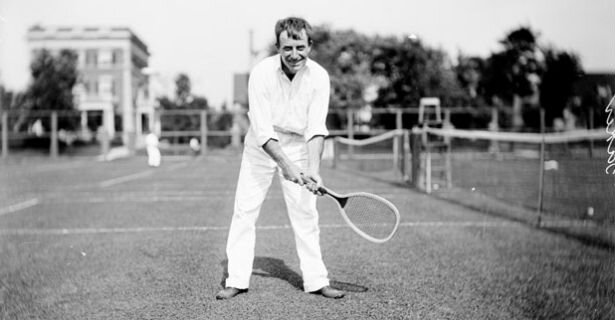History of Tennis customs: the attire
by: Mike/TennisCT
** This is part of our ongoing blog series discussing the history of certain customs and/or rules in the sport of tennis **
As parts of the U.S. start to turn to Spring (yay!) and then Summer, ultimately our sport will return to the great outdoors after being played indoors for the last several months. During hibernation, the sport managed to grow by leaps and bounds providing a safer, healthier alternative for people looking for sports to play during the Covid-19 pandemic. Now, with an abundance of outdoor courts starting to open up, there will be even more players attracted to the sport of tennis!
The question on everyone’s mind is…what will everybody wear?
No, actually, it’s really not something on too many people’s minds. But tennis fashion is a “thing” and it’s a big deal to a lot of people! Tune into any Tour event and you’ll see all kinds of outfits, colors and “threads of expression”. And the shoes! Fashion, for tennis players, is a form of expression, and the brighter and wilder the outfits are, the better. Has it always been that way? No.
For many players during the summer months, it’s time to put on the tennis whites. Many private clubs or country clubs still require tennis whites to be worn. Not to mention, there’s that tournament in England that occurs every year called Wimbledon where they still maintain the all-white clothing rule. Most tennis fans understand that more than anything it is a nod to the origins and history of the sport initially referred to as lawn tennis.
The sport itself actually dates back to the 12th century with a version of it played by French monks. By the 16th century, the sport grew into a sport played by kings and aristocrats - often indoors where the temperature was controlled. By the early 1800’s, lawn tennis outdoors became popular in England. Around that time, the sport’s appeal was growing tremendously across Europe and the Americas. Throughout the 1800’s, the sport was associated with money and privilege. The white clothing both men and women wore was a symbol of the class system in place at the time. When tennis was considered an elitist sport to be played only by the wealthy, white clothing was adopted as it was more expensive to keep clean, keeping the less affluent from taking up the sport. There are, however, some good reasons for wearing white on court. White reflects light better than other colors so it does not absorb heat as easily. This was even more important in the early days when playing in full-length attire.
Other than at Wimbledon, being able to wear white clothing signified that you weren’t “working class” and didn’t have to get dirty doing manual labor (nor did you most likely even have to work at all). By 1890, all-white attire became a rule at Wimbledon and the rest is history.
Today, the sport has obviously grown, expanded and includes all socioeconomic backgrounds. The all-white rules at specific clubs still convey a certain amount of prestige, and are meant to convey respect for the history and the origins of the sport just like Wimbledon does. Most tennis players and students of the game understand that they can express themselves fashion-wise in any number of places around the world where they can wear whatever they want. But when they step out onto the hallowed grounds at Wimbledon, those are the rules - and there are clubs around the world that still follow their lead.
The tradition of wearing white has now very nearly faded away. In fact, it’s almost been turned on his head with players encouraged to express their personality through their clothing. The debate among tennis fans will always rage ad infinitum however, and purists will continue to be shocked by the likes of Andre Agassi’s denims, or more recently, the outfits of tennis’ Lady Gaga, American Bethanie Mattek-Sands.



